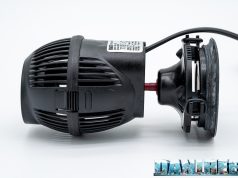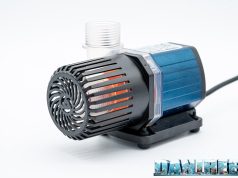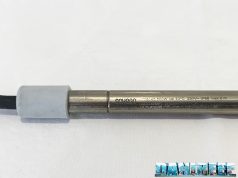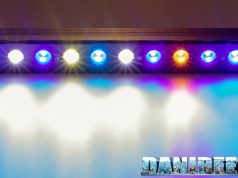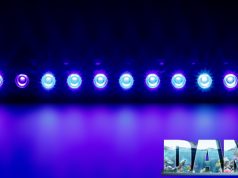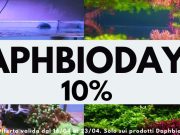The probe
A relevant constructive element surely was placing the temperature probe inside the chiller. Teco inserts the probe on the water inlet hose, thus you can detect precisely the real temperature of the aquarium, because the water isn’t cooled by the chiller. For the same reason you could not detect any cooling on the display even after quite a while from the swtich. If the probe was placed on the outlet hose the water would have been affected immediately by the cooling, and you would have dected a lower temperature, but that wouldn’t have been the real one. And this would have brought to frequent on and off switches of the unit.

Installation
The installation is extremely easy, because you can have insulated hoses of the right size from Teco. Then you insert the hoses on the sinks and block them with the springs in dotation.
In order to clean it perfectly, before you use it, I suggest to unplug it from the sump (and through the clamps in dotation is very easy), then insert the return pump and the hoses inside a basket in which you pour water and chloridric acid (muriatic acid) at 5%, let it rest for ten minutes and the acid should dissolve any residue of limestone inside. But I highly recomment not to use concentrations higher then 5%. After the cleaning wash with plenty of water, to take out any limestone residual. There’s no reason to use osmosis water.
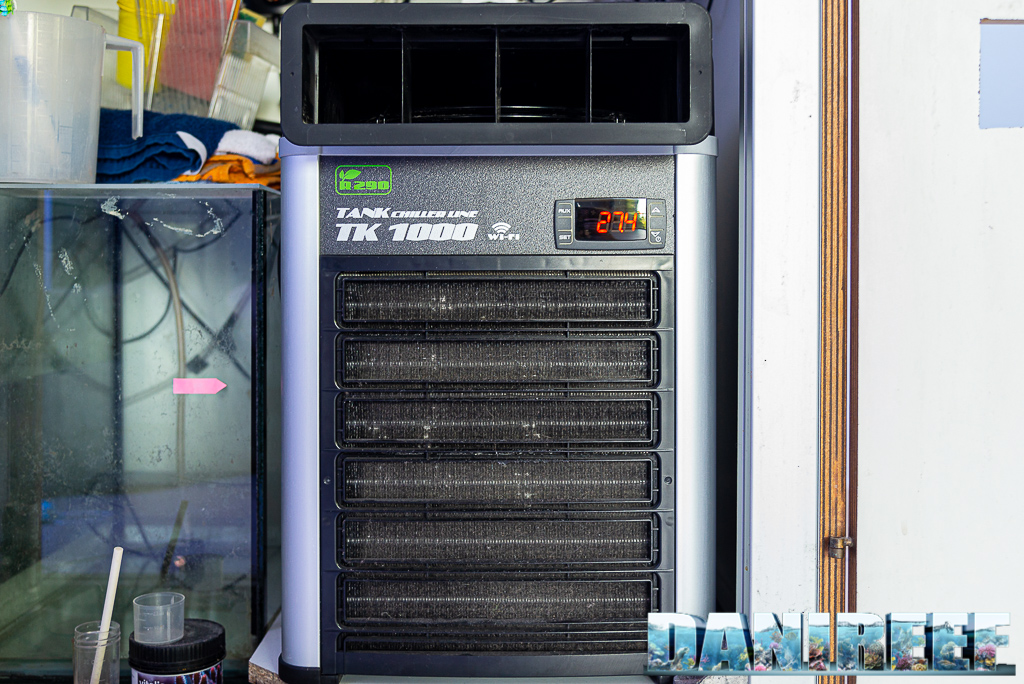
Once you put the chiller into operation with the right pump, and Teco suggests one of at least 500 liters per hour, you can immediately notice the noise. The frequency of the noise is changed, as if this big vent did less noise then the previous models.
The video of the phases of the installation and the set up
When we installed a new TK 500 at Jonathan‘s house, we created a video of the installation that we repropose here in full version. Even if we were talking then about the TK 500, not the new TK 1000 in test, the procedure is exactly the same.
The video is in Italian, but you can change to the English subtitles.
The display shows continuously the temperature measured in tank, that is the temperature of the water conveyed inside, with a visualization until one tenth degree. In the same way the control temperature can be set for tenths of degree. The intervention cycle is fixed at one degree. You can change it on the menu even to half degree by pressing the set button, but Teco discourages because it could bring to many cycles of turning on and off that in the long run could damage the compressor and surely lower the efficiency.
To set the expected temperature you press the “Set” button for three seconds when the chiller is on, then the display will blink showing the temperature of intervention and you can change it with the buttons with the arrows on the sides.
Once turned on you will notice the power of the compressor that also generates a not so elevated noise, compared to other chillers I had and listened to in other aquarists’ houses.
The field test
We installed and used the chiller for the test in two aquariums during last summer: one is mine, the other was from my friend Jonathan Betti‘s that you can see in the following picture, given that his aquarium is much more beautiful than mine. You can read here the full article about: The wonderful Jonathan Betti’s marine aquarium of the month.
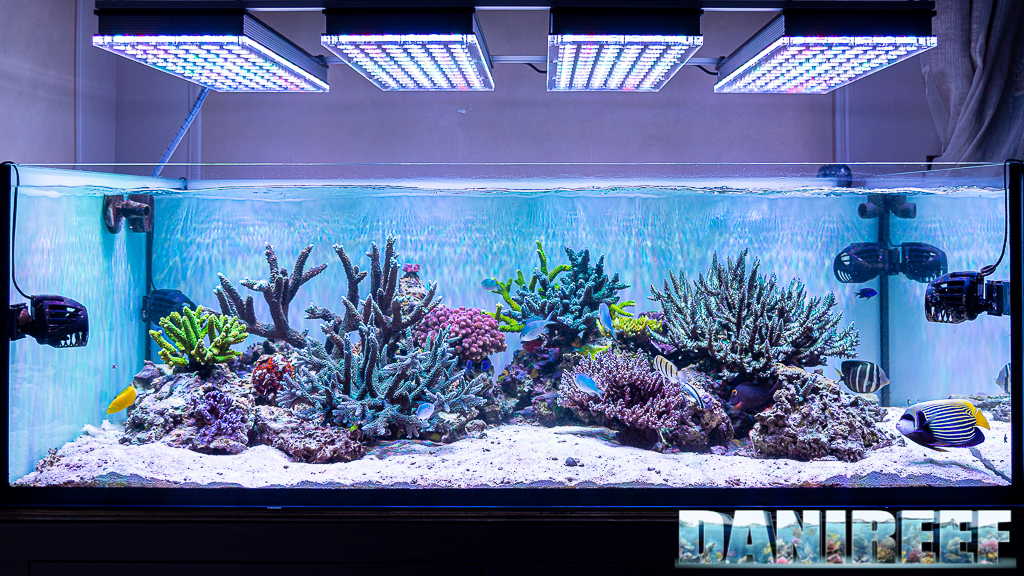
I installed the chiller under the aquarium inside the cabinet, while Jonathan has had the luck to place it on the terrace, as you can see from the pictures below and from the video.
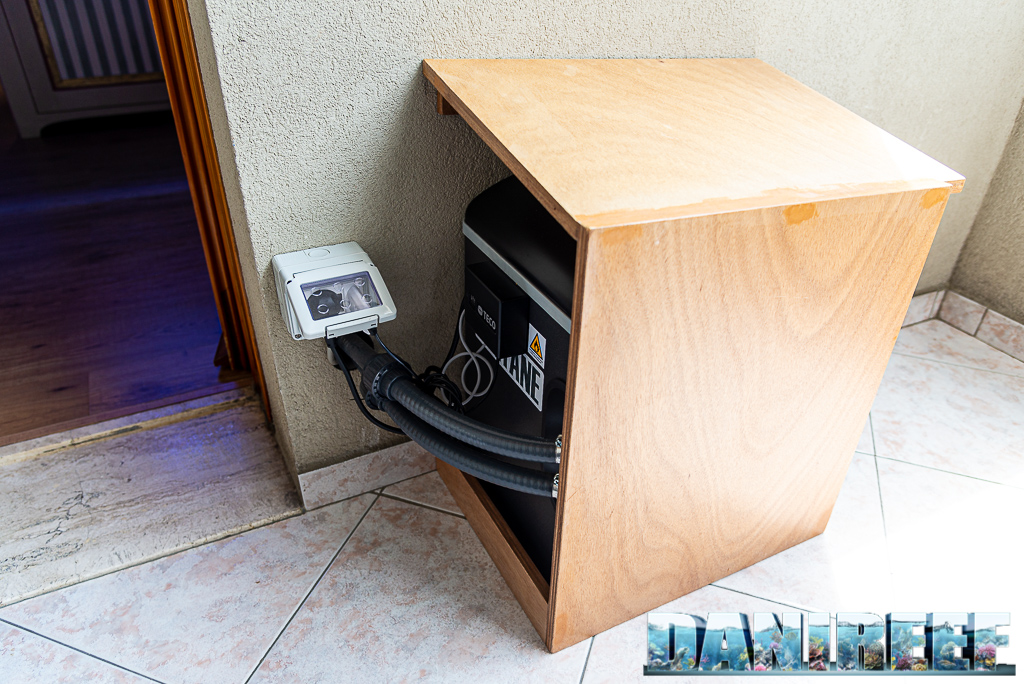
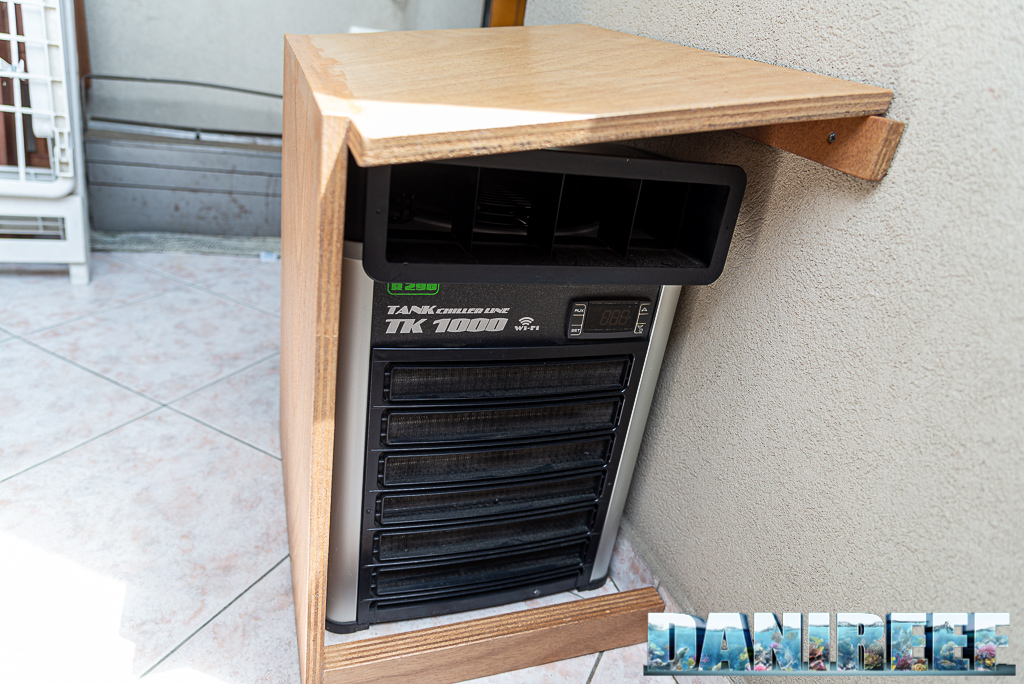
From the cooling point of view it all went well for Jonathan’s aquarium, even if the chiller remained on for long periods. The aquarium always remained under 27,5° and it was also helped by an external vent, without any problem. Consider that we live in Rimini where the temperature in summer is over 30°. In my case, I removed the vents to reduce the evaporation and I managed the temperature with the chiller only, without any problem. I have a 400 liters aquarium and Jonathan’s is about 600 liters, in order to give you some references.
The functioning
The inner temperature controller has a cycle of intervention (hysteresis) of 1°C, as I wrote before, then if we set 27°C the chiller would turn on once reached the temperature set plus the hysteresis, that is 28°, and it would turn off once reached again 27°. Instead the resolution of the device is at the tenth of degree, allowing to read and follow the decrease of the temperature in aquarium.

The cycle of 1°C could seem too wide, but this only if the chiller should be oversized compared to the tank, because in this case you would have remarkable fluctuations in a short period of time given by the strong cooling power. Otherwise the tank would be constantly kept under control. In any case, you can always set the control at steps of half degree.
The noise
One of the major problems of us aquarists is the noise, and the chiller is usually a rather noisy accessory. If you don’t have the possibility to install the chiller outside the house, for example on the terrace as Jonathan did, or in a dedicated room (like my friend Lumaz did), the noise isn’t a characteristic to be underestimated.
We measured the value with the conveyor on the front, so towards the sound level meter, at one meter of distance, as always.

In order to measure the noise I used the VOLTCRAFT 320, a digital sound level meter at IEC 651 of Type II that is quite reliable. Given the nature of the noise all the measurements have been done with the attenuation curve dBA. We did our measurements with closed windows, the sound level meter on a stand at 1 meter of distance, with a minimum measurement range of 120 seconds. They gave the following results:
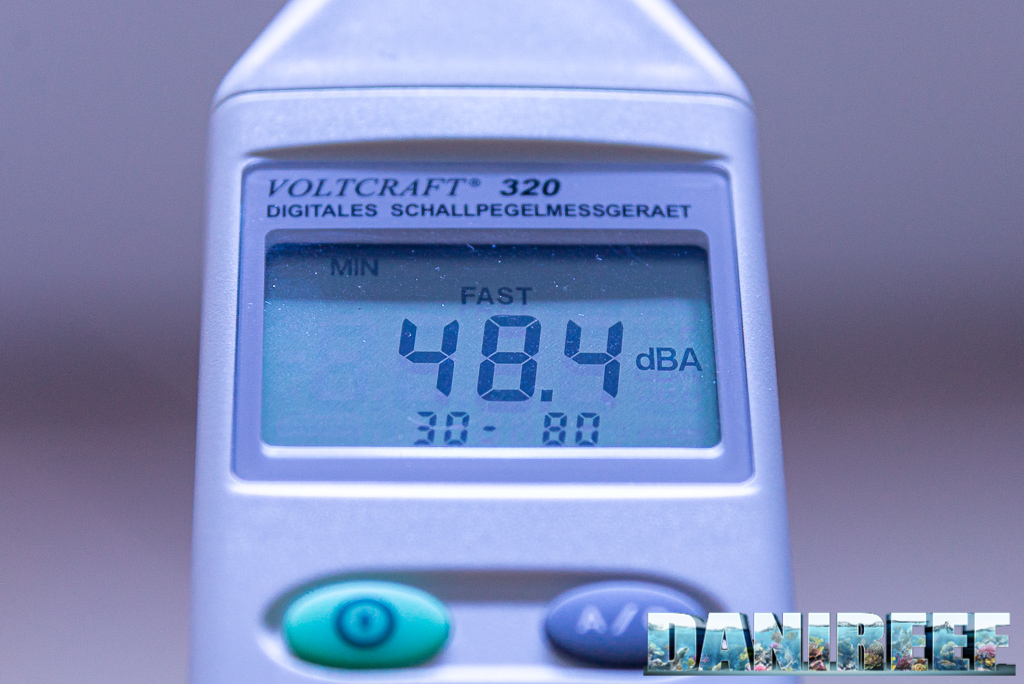
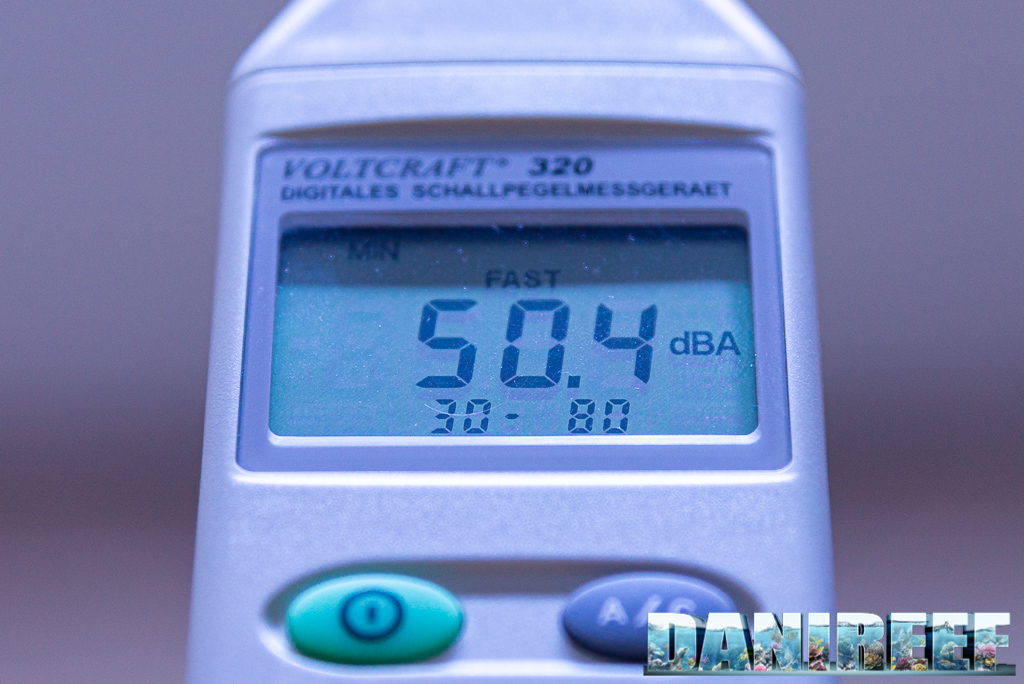
If we compare to the TK 500 we had 46 dB with the chiller off and 51,6 with the chiller on and side outlet. Then, a big improve. We can say that the amount of noise is about the half of the previous unit.
Let’s see the comparison with other chillers already tested:
| Measurements conditions | Teco TK 1000 r290 | Teco TK 500 | Teco TR 15 | Aquamedic Titan 250 – italian |
| Aquarium on | 48,4 dB | 46 dB | 41,5 dB | 48,7 dB |
| Aquarium on with chiller on | 50,4 dB | 51,6 dB | 53,8 dB | 52,1 dB |
| Environment noise recording | 40,4 dB | 35,0 dB | 35,8 dB |
The aquariums in which we did the tests were different, but it stands out that the niosiest aquarium, of 48,4 dB, still has the lowest value when the utilities were on, of 50,4 dB.
The collected values are proper of the environment in which we did our tests, so in other conditions the noise measured might be very different.
The power consumption
The choice of the perfect chiller has to be made also in regards of its consumption. We aquarists well know how the power consumption of the aquarium affects the electric bill. Teco provides for the TK 1000 a consumption on cooling of 270 watt, very few in absolute value, then even the relative consumption won’t be particularly high. But we also wanted to measure the difference with the previous Teco TK 1000, measured in Teco‘s headquarter. And as you can see the difference is relevant.
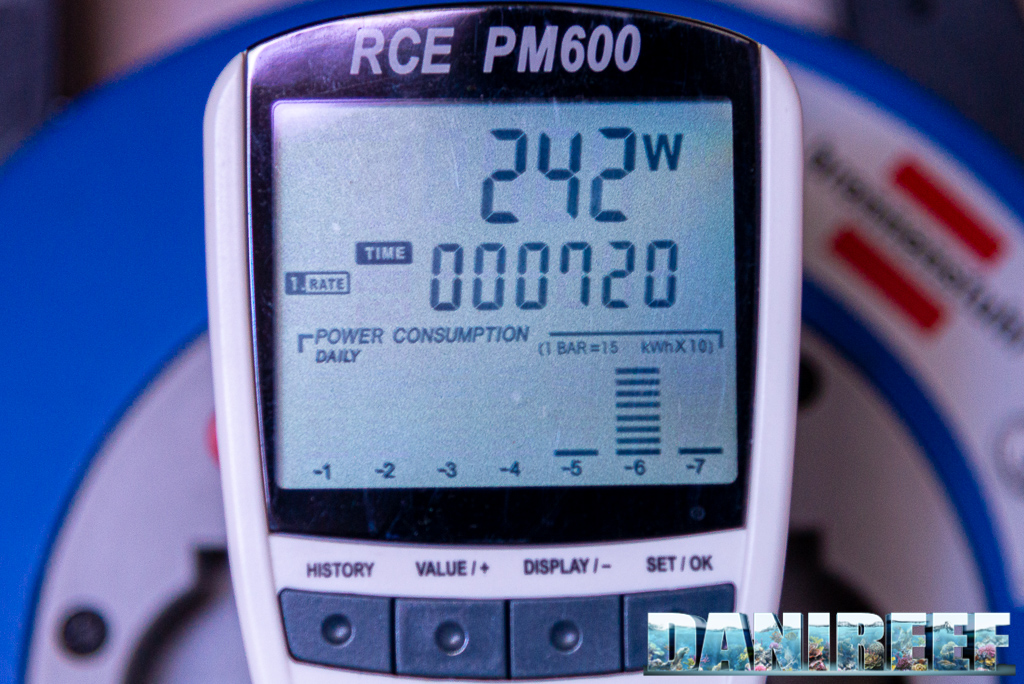
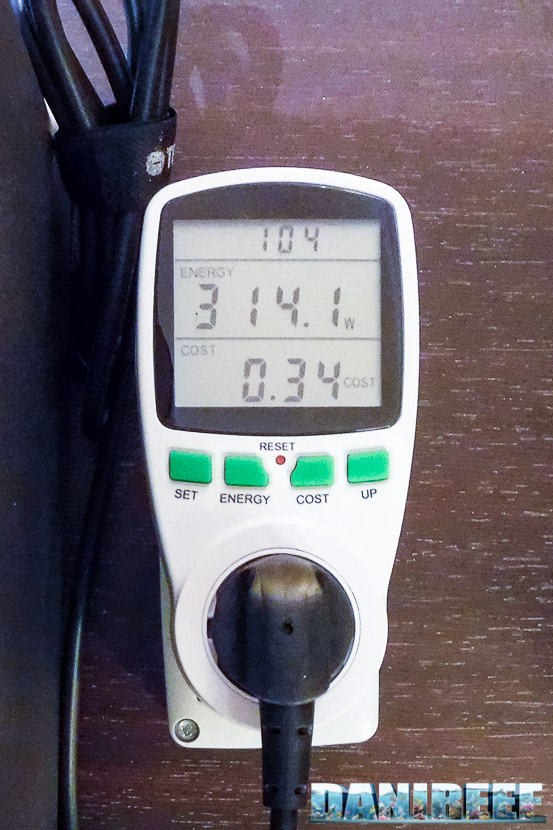
Normally, we can say that the energy consumption attributable to the chiller is rather less than we expect. Even if 240 watt aren’t so few to amortize, if we consider also the hottest periods the chiller could work even 8 hours per day (which are 52 cents per day in these conditions).
Important: the water speed in the chiller and the choice of the supply pump
The speed of the water inside the chiller is a fundamental data. Usually we tend not to think at this feature as very essential, because we think that if the water flowed through rather quickly it would be cooled less but it would flow more in terms of quantity, which is equivalent to make flow through less water, but more cold.
But this argument, when we talk about chiller, is simply wrong.

In fact we wouldn’t consider the efficiency of the chiller, that increases at the increasing of the temperature. That is, when the water enters the unit is cooled, but if it would pass through slowly the chiller would cool a lot, having then troubles to cool even more. A rather fast transition would allow the water to stay more worm and to maximize the intervention of the chiller. The faster the water flows, so the more powerful is the pump, the bigger will be the performance of the chiller and the aquarium will cool down quickly. The difference, believe me, isn’t small. You can even reach the double of the whole efficiency.
Teco recommend a pump of a real rate of at least 500 liters per hour, but seen our considerations you can even double the value because you’ll only obtain benefits for sure.
I suggest to the ones that have the luck to install the chiller outside the house to measure the real rate of the return in sump, because the distance and the turns that connect the aquarium to the chiller greatly reduce the rate, especially with corrugated pipes. More over, I highly recommend to protect it from the weather that would affect its performances. Teco, in fact, present it as an indoor chiller.

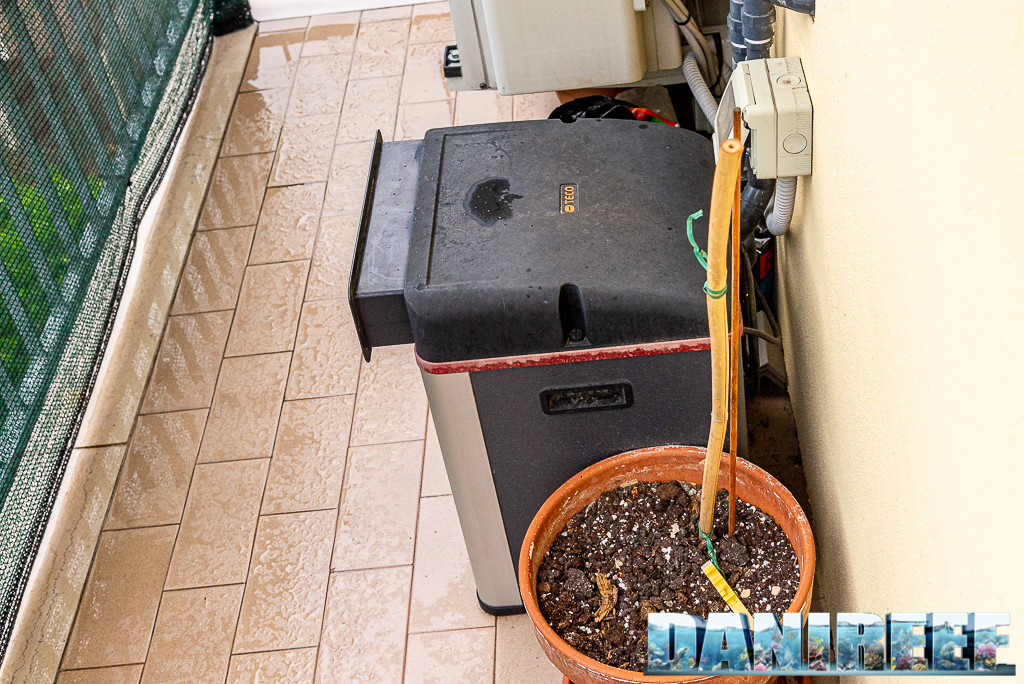
Wi-Fi and Teconnect
Teconnect is a device to connect only to Teco chillers like, obviously, our TK 1000 r290. Teconnect acts through an app that allows to control your own chiller, visualize the temperature and see different graphs, related to the trend of the temperature in aquarium.
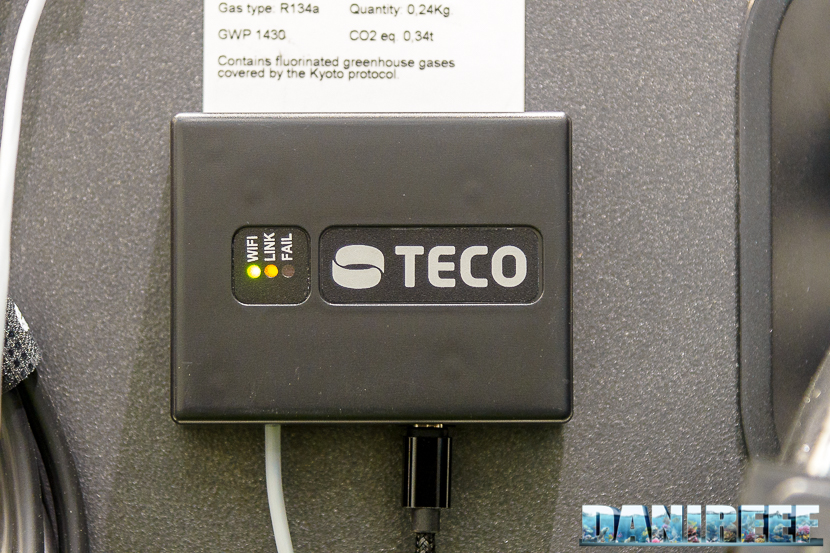
On the front there’s also indicated the wi-fi. It stands for the possibility to use the teconnect. You can have on your smartphone the exact copy of the display of the chiller. In this way we users can work exactly as if we were in front of the chiller. Maybe it isn’t the most necessary feature, but it widens a lot the versatility of our chiller.
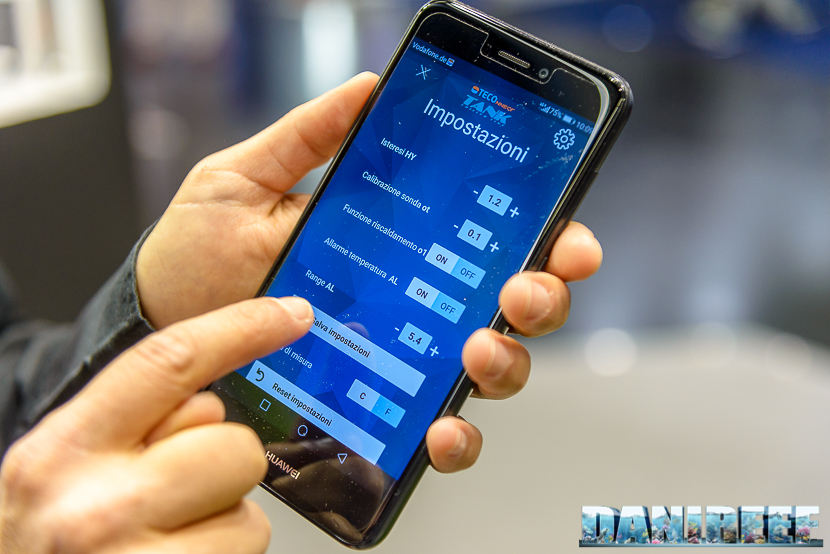
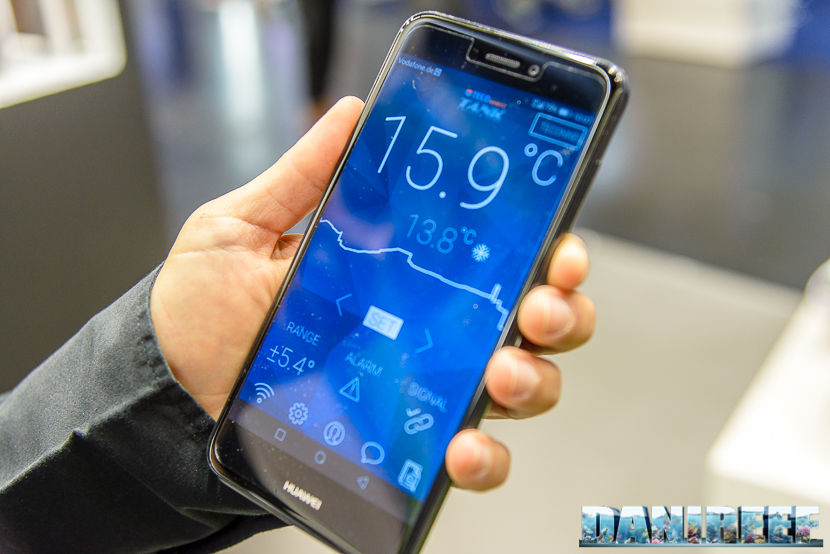
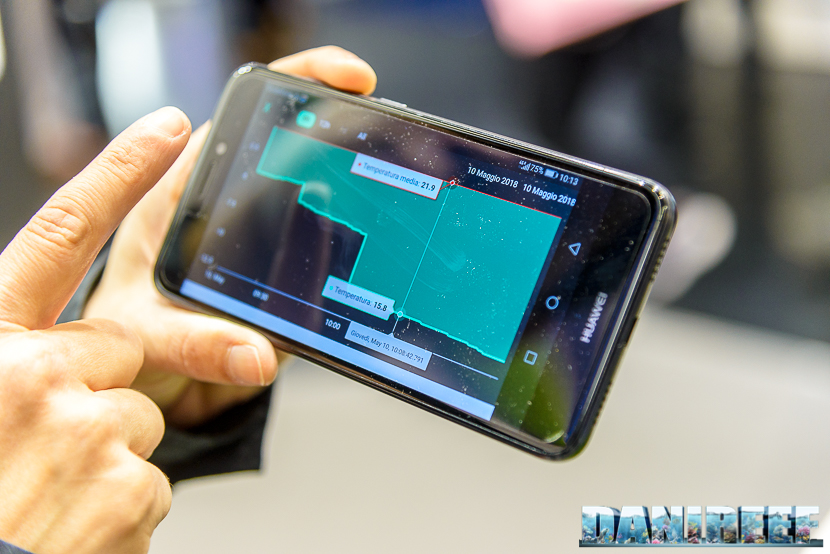
Obviously the teconnect has to be purchased separately, so we will dedicate an article in the next weeks.
The article continues on page three with our final considerations.



